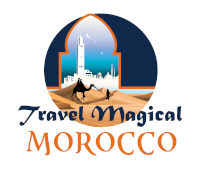Morocco is a land where your senses are stimulated at every turn. The aroma of fresh herbs in the medina, the sound of bubbling tagines on the streets, and the colorful markets filled with spices, vegetables, and fruits—these are experiences you won’t forget. But what truly makes Morocco special is the role food plays in its culture. It’s not just about nourishment; it’s about coming together, sharing, and creating memories. Let’s embark on a journey through Moroccan cuisine and discover why you need to experience it for yourself.
Food as a Social Ritual
In Morocco, eating is much more than merely filling your stomach. It’s a social event, a time to gather and share stories. Whether you’re invited to someone’s home or dining at a local restaurant, one thing is certain: you will never eat alone. Sharing food from a communal plate strengthens bonds among family and friends. There is no distinction between guest and host; everyone shares from the same dishes, often using their hands and always accompanied by fresh bread as a kind of ‘spoon.’
Moreover, hospitality is paramount. It’s not uncommon to be invited by a stranger for a cup of mint tea or even a meal. Sharing food is a way for Moroccans to show respect and appreciation. It’s no wonder that a traditional Moroccan dinner often lasts for hours. It’s not a hurried affair but a moment to savor the flavors, the company, and life itself.
Traditional Dishes: Beyond Couscous and Tagine
When people think of Moroccan food, couscous, and tagine often come to mind first. And honestly, that’s not for nothing. Couscous typically served with steamed vegetables and a delicious broth, and tagine, a slow-cooked stew, are the cornerstones of Moroccan cuisine. But there is so much more to discover.
Take, for instance, Rfissa, a dish usually served during special occasions like births. This dish consists of spiced chicken, lentils, and a mix of bread and broth, soaked with spices like cumin, saffron, and ginger. It’s comfort food at its finest—rich in flavor and made with love.
Then there’s B’stilla, a pastry that masterfully balances sweet and savory. Filled with spiced meat (traditionally pigeon but often replaced by chicken) and finished with powdered sugar and cinnamon, this dish is a delight for the taste buds. It may sound like a strange combination, but one bite, and you’ll understand why this dish is often served at weddings and celebrations.
Harira, the traditional soup of Morocco, also deserves mention. This soup, packed with lentils, chickpeas, tomatoes, and spices, is often eaten during Ramadan but remains popular year-round. It’s nutritious, heartwarming, and perfect for when you want to indulge yourself.
The Spices of Morocco
What truly sets Moroccan cuisine apart are the spices. The country has a rich history as a trading hub, and this is reflected in its ingredients. Spices like saffron, cumin, turmeric, and cinnamon play a starring role in nearly every dish. However, the undisputed king of spices in Morocco is ras el hanout, a complex blend that can contain up to 30 different spices. It imparts that quintessential Moroccan flavor-rich, aromatic, but never overpowering.
The art of seasoning in Morocco is subtle. It’s not about creating the most intense flavor but rather achieving balance and harmony. Each dish has its own story, and the spices are the medium through which that story is told. Whether you’re enjoying a tagine bursting with saffron and cinnamon or a simple salad with cumin and lemon, the flavors of Morocco will stay with you.
The Adventure of Moroccan Street Food
If you truly want to understand the heart of Moroccan food culture, you can’t miss the street food. In every city, you’ll find small stalls where you can taste local delicacies. Start your day with a freshly baked M’smen, a crispy, layered bread often enjoyed with honey or jam. Or try a Sfenj, a light, fried donut that’s delicious with sugar or honey.
Craving something savory? Then the Maakouda, a spiced potato fritter, is the snack to try. You’ll find these everywhere on the streets, and they’re the perfect way to take a quick break while exploring the vibrant cities.
Seasonal Fruits and Fresh Sugar Cane Juice
However, the Moroccan streets offer much more. As you wander through a market or medina, you’re surrounded by fruit stalls. Seasonal fruits like figs, pomegranates, oranges, and dates are abundantly stacked. Especially the oranges from Morocco are known for their sweetness and are often freshly squeezed right before your eyes.
But what you really must try is fresh sugar cane juice. This drink, made from freshly pressed sugar cane stalks, is a unique treat. The sweet, refreshing juice is often mixed with lemon or ginger, creating an explosion of intense flavor. It’s the ideal thirst-quencher on a warm day and a typical Moroccan experience you don’t want to miss.
Experience It Yourself with Travel Magical Morocco
Does this sound like a dream you want to experience? Why wait? At Travel Magical Morocco, we offer not only the chance to discover Morocco’s rich food culture but also to experience it for yourself. Join one of our culinary tours and learn the secrets of Moroccan cuisine firsthand. From visiting local markets to cooking with locals, we ensure you taste the real flavors of Morocco.
Whether you’re a seasoned foodie or just curious about new tastes, with Travel Magical Morocco, you’ll embark on a culinary journey you’ll never forget. Book your trip now and let yourself be taken on a flavorful adventure!
